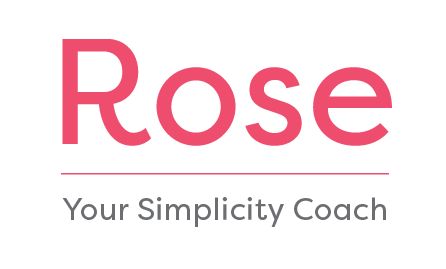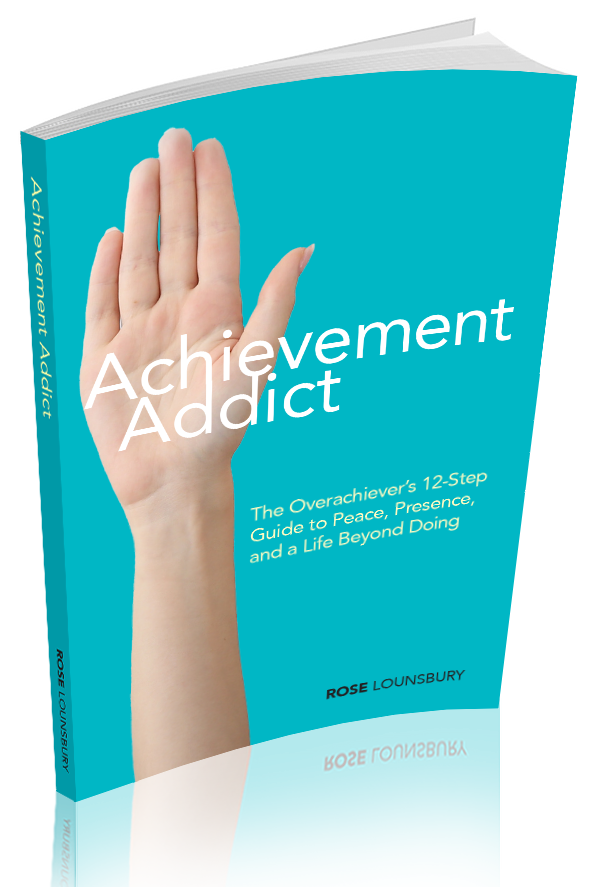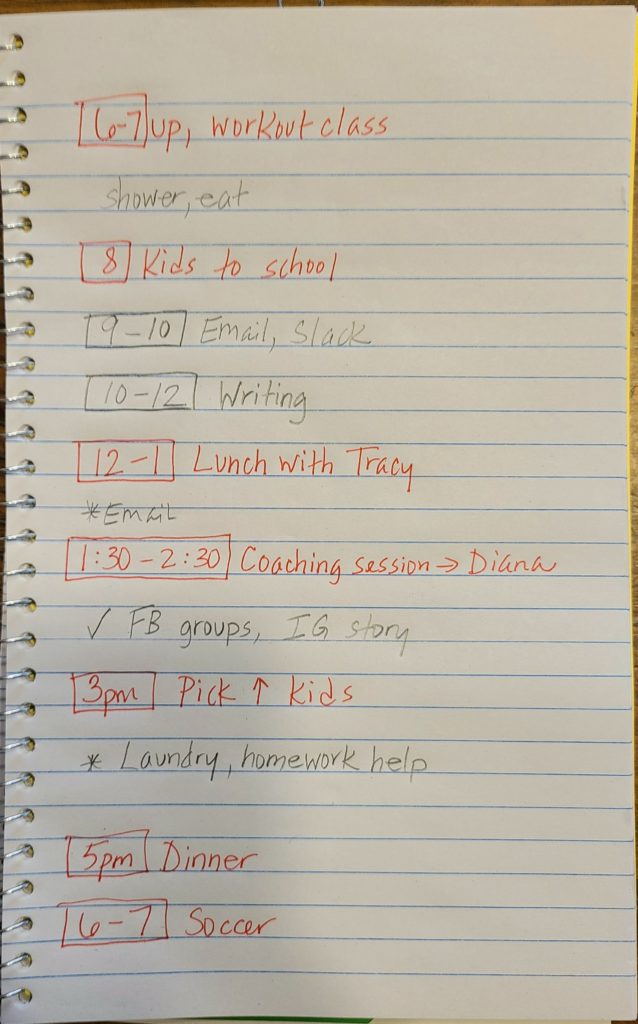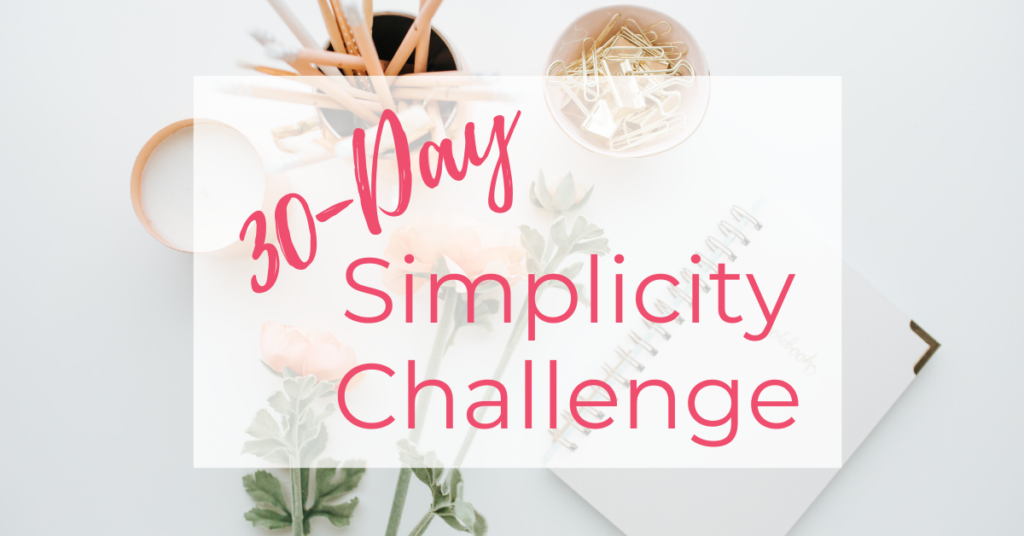Lena struggled with severe ADHD. She was in graduate school, frustrated with multiple deadlines, and struggling to prioritize her must do’s with her could/should/want to do’s when she reached out to me for help. During one coaching session, I was trying to help her differentiate between what she HAD to do and what she WANTED to do, and an idea popped into my brain:
“What if we write down all the things you HAVE to do in red and all the things you WANT to do in pencil? The red things will be like ‘do-or-die’. They have to be done or they bleed, that’s why they’re red. The pencil things will be like ‘It’d be nice to do that, but nothing really bad will happen if I don’t.’ They can be erased and moved to the next day.”
She nodded.
I nodded.
My “Red Pen and Pencil Trick” was born.
I have since taught this simple daily scheduling system to hundreds of clients and students.
And I’ve started using it myself. The genius is in the simplicity. You don’t need a fancy planner or high-tech gadget to do this.
You just need three things:
1. A notebook
2. A red pen
3. A pencil
It really couldn’t get easier.
If you’d like to try this system to create a daily schedule, here’s how to do it:
Step 1: Every night before you go to bed (or first thing in the morning) write out a daily schedule in your notebook.
I use a basic spiral notebook that you can find just about anywhere for about 25 cents. Like I said, this system is SIMPLE with a capital S.
Step 2: Check your calendar for things to write in RED.
These are the “do-or-die” items, the MUST DO’s. David Allen (of Getting Things Done fame) calls these “hard appointments” because they can’t be easily moved. Think doctor’s appointments, sports practices, meetings, etc. Write all your RED APPOINTMENTS down first, leaving approximate space where you have time in-between them.
Step 3: Check your to-do lists for things to write in PENCIL.
These are the COULD/SHOULD/WANT TO DOs. You could do them that day, but nothing awful will happen if don’t. Think calling your sister, buying groceries, looking up stuff online, etc. David Allen refers to these as “soft appointments” because they can flex around your hard appointments. Write them in pencil because pencil is a flexible medium; you can erase them and move them to the next day.
Then live your day, focusing on the hard/red appointments. If I get through my day and I’ve done everything in red, I feel like I’ve had a good day. I didn’t let any must do’s slip, so I can go to bed feeling pretty good about how I spent my time.
Important note: I almost never accomplish all my soft/pencil appointments and that’s okay. They are could/should/want to do’s. I can move them to the next day or I can simply not do them and nothing bad will happen.
Here’s an example of what a daily schedule might look like:
Notice that I put some things in red–like a morning workout–that I really want to do, but probably aren’t technically hard appointments. I do that to make myself take them more seriously. You’re welcome to turn soft appointments into hard appointments if you like. Just be careful not to do that too much or you will lose sight of what is truly a priority!
I also put what I call “hit points” in red. These are things that I don’t have in my calendar necessarily, like “kids to school” or “dinner” but I know that not “hitting” these appointments at approximately those times will cause the rest of my day to suffer. For example, if we don’t “hit” dinner around 5pm and soccer is at 6pm, then we’ll be eating late and bedtime will back up and I’ll have grouchy kids and worse, a grouchy self, on my hands the next morning.
I make a schedule like this every single work day, every single week, all year long. (And yes, I always use the red pen! I’ve tried using a blue or black pen, but it’s just not the same…) I don’t worry about it on the weekends, unless we have a weekend that happens to be particularly filled with hard appointments.
You may have heard this technique referred to as “time blocking” and used by productivity gurus such as Cal Newport. It’s very similar. The only difference is the red pen/pencil color-coding to separate the “must do’s” and the “could/should/want to do’s.” I find that this is key, because if you have a schedule where everything looks equal, you’re unable to quickly prioritize if life drops an unexpected interruption into your day. (Which, if your life is anything like mine, happens pretty much every day!) Knowing that my “must do’s” are in red means that I will prioritize them if (I mean, when) life throws me a curveball.
I hope this post helps you gain some insight on how you could organize your daily schedule to make sure you get done what you NEED to get done, but also leave room for those things you want to do.
I’m curious… what tips and tricks do you use to manage your daily schedule?
Cheers to less stuff and MORE time!











One Response